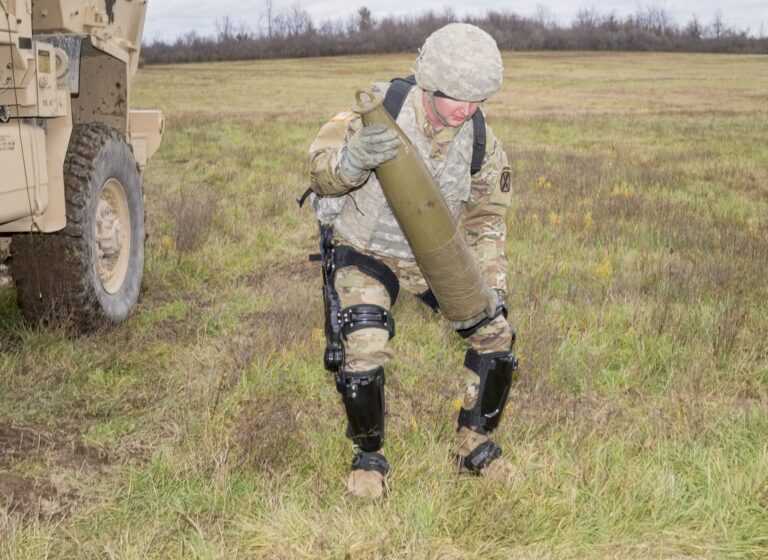3D printing
Additive manufacturing, more commonly known as 3D printing, is about to transform the way we make things. In contrast to traditional manufacturing, 3D printers build objects from digital build files by depositing and joining successive layers of material. 3D printers can process a wide variety of materials, including plastics, metals (such as steel or aluminum), ceramics and even organic tissues. Many industries, with the automotive, aerospace and healthcare industries at the forefront, already draw on 3D printing – not only for rapid prototyping but more and more also for the production of end-use parts. Additive manufacturing offers many advantages over traditional manufacturing. It makes it possible, for example, to produce parts with complex geometries, such as lattices or hollow structures, which could not be produced by traditional molting techniques. The resulting parts are lighter, yet stronger. Additive manufacturing is a potentially disrupting technology that brings not only benefits but also risks, in particular for (international) security. Military planners and defence contractors have already realised the potential of additive manufacturing – but so have non-state actors. 3D printed drones and handguns have already proven to be functional and designers have made significant progress over the last couple of years. Compare, for example, the first functioning printed gun, the single shot ‘Liberator’, developed in 2013 with the most recent submachine-type FGC-9 – with FGC standing for F*** Gun Control.

While the printing and possession of these weapons is of course illegal, police raids have already discovered workshops ‘mass’ producing printed guns. Obviously, this poses huge challenges for domestic security. While buying regular small arms from the diverse battlefields of the world might still be an easier option than printing firearms, terrorists could use 3D printing, for example, to produce ceramic or plastic firearms that could pass unnoticed through metal detectors. Or they could ‘print’ a swarm of cheap drones, equipped with C-4 plastic explosives to be used as improvised explosive devices.
3D printing may also impact on the proliferation of weapons of mass destruction (WMD). While we are a long way from having to worry about someone being able to ‘3D print the bomb’1, additive manufacturing may facilitate clandestine state and non-state WMD programmes. Proliferators could, for example, use the technology to illicitly manufacture components of a gas centrifuge at less risk of being exposed.
The good news, at least for the moment, is that most technicians agree that printing weapons still requires a lot of manual craftsmanship and skill when it comes to the finishing of the product. But this might change in the future.
Human enhancement
What is ‘human enhancement’?
According to a 2021 report by the UK Ministry of Defence and the Bundeswehr Office for Defence Planning,
‘[t]he paradox of war is that humans are central to its conduct but are also the weakest link’.2
However, the idea of enhancing a warfighter’s quality by either using tools – weapons or armour – or drugs is almost as old as warfare itself. And injured or maimed soldiers have long been given prostheses and artificial limbs to help them regain some quality of life. For a very long time, however, these ‘enhancers’ were inferior, not very practical or even dangerous. Almost all drugs do have negative side effects, including addiction. Body armour was heavy and restricted movement. And replacements for limbs were ungainly and crude. What is new, however, is the expectation that high-tech solutions can actually enhance human performance without drawbacks. Three ways to enhance the human body are currently heavily researched.
The most ‘conventional’ approach focusses on active, that is battery-powered equipment attached to the human body. While active night vision goggles have been used by the military for decades now, motor-driven exoskeletons are being tested to enhance a soldier’s endurance, strength and resilience.

The development of miniaturised motors, tough but lightweight materials and high-capacity power supplies has boosted this development. It is obvious that while these enhancements might improve the individual soldier, the overall impact on a military’s fighting power is limited. It is also obvious that the impact on the individual soldier’s health is minimal, as these enhancements are fully reversible.
The second field to look at when talking about human enhancement is also an old one: the use of chemical drugs to improve the individual warfighter’s ability to fight. Already in ancient times warriors drugged themselves by chewing certain leaves. Drinking coffee as a means to stay awake is common, not only in the military. During World War II, a drug called Pervitin, which is now known by the name ‘Meth’, was given to German soldiers to stay awake.3 But one can also bring to mind a broad range of vaccinations used to keep soldiers fit under harsh conditions. New technologies in the biosciences might result in significantly more potent drugs. In contrast to the category debated above, the use of drugs might not be fully reversible and can have lasting impacts by creating life-long addictions.
This might be even more important for another form of human enhancement, sometimes referred to as ‘bodyhacking’.4 The development of new materials and technologies has significantly improved the availability and performance of prostheses and implants in the civilian sector, which were previously only intended for people who had lost real body parts, e.g. through accidents or war.

Some observers speculate, however, that in the not too distant future, soldiers will or might even be ordered to undergo surgery to have certain parts of their body permanently replaced by enhanced artificial products to improve performance or sensation – the idea of the cyborg becoming reality. While the notion of sacrificing healthy limbs or organs and replacing them with enhanced artificial versions feels rather Cyberpunk and dystopian, the idea of improving humans with (removable) implants seems rather doable in comparison. Human–machine interaction via implanted computer–brain interfaces, for example, does not seem that far off anymore.5 It is plausible to assume, for instance, that someone with a direct computer–brain interface can control autonomous weapons in a much faster and far more effective fashion than someone relying on a traditional mouse and keyboard – reaping the advantages of autonomous weapons by still providing human control.
The fourth field encompasses the design of new artificial biological or chemical systems with as yet unknown qualities. This is known as ‘synthetic biology’ and involves changing humans on the most basic level – i.e. that of the genome – with the help of techniques like CRISPR-Cas.
However, at least in areas three and four, military players are currently funding basic research rather than concrete applications (see Learning Unit 03 for more details). However, in 2019, the US military forecast that human enhancement technologies would be widely available by 20506.
Legal and ethical implications of human enhancement
As described above, the idea of enhancing ordinary humans to create some sort of super soldier is not new. And some enhancers, whether technological or biochemical, are already in use. However, aside from a slowly expanding scientific discourse, there has been almost no international debate about the implications of current technological developments. These developments raise new legal, ethical and political questions.7 The first and most obvious question pertains to the risks one is willing to take or ask others to take. Every medical procedure invovles certain risks for those who undergo it. There has, for instance, been a debate on whether a state can order a soldier to get a risky vaccination. Forcing a soldier to accept an implant or even to replace a healthy limb or organ is even more intrusive and fundamental. Negative side effects can never be ruled out. Do soldiers have to accept these risks to become, for example, a member of an elite unit?
Depending on the grade of enhancement a human has undergone: would they still count as humans with the rights of a POW or would they be considered a weapon in and of themselves? Would it be legal to ‘deactivate’ certain functions of captured soldiers, i.e. ‘switch off’ their artificial legs?
In addition, what are the risks to others – especially when it comes to stimulants or drugs. Can soldiers be held accountable for war crimes if they were ‘high’ when they committed them? What if there are unforeseen adverse reactions to other enhancers or medicines?
Another important issue is of ethical nature: Is it ethical to ask soldiers to potentially irreversibly enhance their bodies? Would they have to give back implants or certain abilities once they leave the military? Would that preclude any permanent enhancements?
We do not claim that there are no answers to these questions. Most can probably be answered in a satisfactory way based on existing law. However, up to now there has simply been no international forum where these questions can be raised and addressed, let alone answered.
Nanotechnology
Facts and figures
A nanometre (nm) is defined as a millionth of a millimetre – which is approximately the size of a glucose molecule. Nanotechnology (or nanotech) involves creating or manipulating precisely such very small objects on an atomic or molecular scale. When experts use the term nanotech, they are usually referring to systems measuring between 0.1 nm and 100 nm. Nanostructures offer the possibility of creating new materials with enhanced, novel or unique characteristics and capabilities, even including electromechanical objects on a nanoscale. The ultimate goal is to design nanomaterial by placing individual atoms or molecules in a predesignated location in a structure.
Governments started to be really interested in nanotech at the advent of the new millennium. From the very beginning, the USA has been at the forefront of the nanotech revolution, initiating, for example, the National Nanotechnology Initiative (NNI), a federal research and development programme, as early as 2000. Between 2001 and 2023, the NNI received a total of US$ 40.7 billion8 from participating agencies, including – amongst others – the Department of Defense (DOD), Department of Energy and NASA. Its current budget is roughly two billion, with 45 percent of that being spent on foundational research and 35 percent on concrete applications. While the relative share of the DOD’s contribution declined after 2013, it has increased again since the beginning of the 2020s. Other countries with a strong interest in nanotech include member states of the European Union (especially Germany and the UK), Japan, China, Russia and Korea. While many nanotech applications are civilian, nanotechnology might have an impact on numerous military-related issues as well. Reducing the weight soldiers have to carry is one likely application, for example by creating lighter but still robust body armour, weapons and equipment. Lighter yet more powerful batteries and computers can facilitate new forms of tactical communication. Nanostructures can also enhance the effectiveness of drugs, explosives or propellants. Some projects based on nanotechnology are working on active optical camouflage for individuals, tanks or even warships. Scholars even envision the development of ‘smart dust’, made up of a network of communicating sensors smaller than one cubic millimeter.
Experts who have been covering nano since the early 2000s (especially German physicist Jürgen Altmann) saw nanotech, from very early on, as being a perfect candidate for preventive forms of arms control, that is restrictions based on the forecast threat of an emerging technology.

However, there has not been any serious attempt to regulate military nanotechnology yet. Some of the reasons for this might be the following:
- First, nanotechnology is a classical dual-use technology. New materials with extraordinary characteristics will find application in the military as well as the civilian sector. Growth of the civilian market is forecast to be in the double digits for years to come. So, finding a balance between legitimate civilian interests and military restrictions will be hard.
- Second, as the diverse range of potential applications of nanotech demonstrates, it would be counterproductive to try to restrict nanotech per se.
- Third, many military applications of nanotech still look like science fiction to the uninformed observer. While arms control advocates emphasise the precautionary principle, ‘invisibility cloaks’ (aka ‘active camouflage’) or smart dust still seem way too far out for many political decision-makers to focus on.
In sum, how to prevent or even stop a potential nanotech ‘arms race’ is still an open question – and one that is not receiving an awful lot of attention at the moment.
Footnotes
-
Volpe, T./Kroenig, M. 2015. “3-D Printing the Bomb? The Nuclear Nonproliferation Challenge”. https://carnegieendowment.org/2015/11/04/3-d-printing-bomb-nuclear-nonproliferation-challenge-pub-61920 ↩
-
UK MoD 2021: Human Augmentation – The Dawn of a New Paradigm. A strategic implication project. https://assets.publishing.service.gov.uk/media/609d23c6e90e07357baa8388/Human_Augmentation_SIP_access2.pdf, p.11. ↩
-
UK MoD 2021: Human Augmentation – The Dawn of a New Paradigm. A strategic implication project. https://assets.publishing.service.gov.uk/media/609d23c6e90e07357baa8388/Human_Augmentation_SIP_access2.pdf, p. 60. ↩
-
UK MoD 2021: Human Augmentation – The Dawn of a New Paradigm. A strategic implication project. https://assets.publishing.service.gov.uk/media/609d23c6e90e07357baa8388/Human_Augmentation_SIP_access2.pdf, p. 90–1. ↩
-
Lin, P., et al. 2013. “Enhanced Warfighters: Risk, Ethics, and Policy”. New York, The Greenwall Foundation; UK MoD 2021: Human Augmentation – The Dawn of a New Paradigm. A strategic implication project. https://assets.publishing.service.gov.uk/media/609d23c6e90e07357baa8388/Human_Augmentation_SIP_access2.pdf; Burt, Peter. 2023. “Cyborg Dawn? The military use of human augmentation for war fighting”. Drone Wars UK, https://dronewars.net/wp-content/uploads/2023/05/DW-Cyborg-Dawn-WEB.pdf. ↩
-
Altmann, Jürgen. 2006. Military Nanotechnology. Potential applications and preventive arms control. Routledge ↩